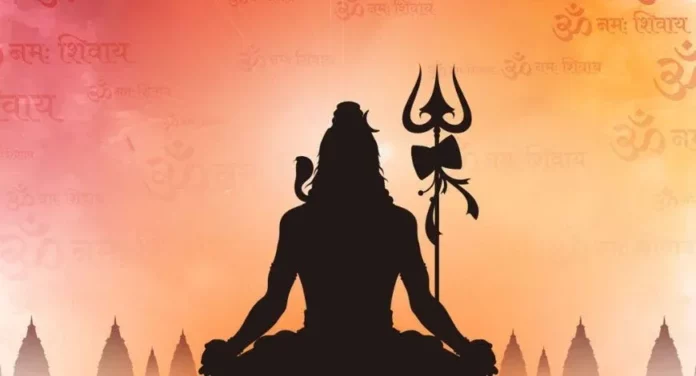India Post News Service
Maha Shivratri is defined as Lord Shiva’s great night. It is an important event for fasting, meditation, self-study, social harmony, and an all-night vigil at Shiva temples. According to the Sanatana calendar, Maha Shivratri is observed annually on the fourteenth day of the dark (waning) half of the lunar month of Phalguna or Magha. This year, the day falls on the Gregorian calendar of March 8, 2024, Friday.
What are the reasons behind the celebrations of Maha Shivaratri?
The reasons include:
Maha Shivratri is the Day when Lord Shiva came to this earth in the form of Lingam (‘Lingodbhav Moorti”).
It is the day when Lord Shiva did ‘Shiva Tandavam’ (Dance) all the night.
On this day Lord Shiva Drank “Halaa Hal” (poison) for the sake of the world and became “Neelakanth”.
There is another reason to believe that this is the day when Lord Shiva and Goddess Parvathi got married.
How Maha Shivaratri is celebrated every year?
MahaShivratri is the day to honor and celebrate Lord Shiva and a notable festival in Sanatana Dharma, marking the importance of “overcoming darkness and ignorance” in life and the world. It is celebrated by worshipping Shiva, chanting Shiva prayers, fasting, and meditation.
The Shivaratri day focuses on teaching and delivering discourses on following good virtues in life such as honesty, non-violence, charity, forgiveness, and respect and love all the living and non-living things on the earth. Some temples organize discourses on Shiva Purana, dramas, and worship through sacred dances.
In short, MahaShivratri is an opportunity to acknowledge the vast emptiness and reconnect with the creator spiritually. It is a night of wakefulness and awakenings, a night to receive incredible vision, compassion and revelation. It is believed that the essence of Maha Shivratri continues to inspire and uplift hearts, fostering a sense of unity, peace, and transcendence in the hearts of all who celebrate this sacred occasion.
What is the importance of Maha Shivaratri Jagran/Jagaran?
The term “Jagran” translates to “awakening,” and Maha Shivaratri refers to an all-night-long musical and devotional event dedicated to the worship of Lord Shiva. It is a religious and cultural practice commonly observed in the Sanatana tradition.
Jagaran is the major aspect of Shivaratri Vrat. It is to stay wake the whole day and night during Shivaratri. According to Shiva Purana, and Linga Purana, ‘Watching Lingodhabhavam, the emergence of Lord Shiva from the base like structure is auspicious event in Sanatana.’
Therefore, people stay wake during Shivaratri night. Lingodhabhavam is performed at the midnight or in the early morning in every Shiva temple around the world. Devotees stay awake all night, by performing the Pooja of Lord Shiva that is initiated from the evening and lasts all night. The night is divided into 4 quarters.
It is believed that anyone who utters the name of Shiva, during Shivratri, with pure devotion, is freed from all sins. He or she reaches the abode of Shiva and is liberated from the cycle of birth and death. Many of us perform the rituals like fasting, Jagaran, Abhishekam, and many more, but it is essential to know the exact reasons behind the practices.
Jagaran comprises the performance of all-night vigils, as well as puja, songs, and dances for the veneration of a deity. During a Jagran, devotees sing religious songs, prayers and Bhajans (devotional songs) to praise and invoke the blessings of Lord Shiva. Jagran only foster a feeling of unity and goodwill.
While accompanied by storytelling, singing, and dancing, it also encompasses elements of various Indian folk communities. The Jagaran purifies and spiritualizes the environment and surroundings of the shrine/home with holy vibes and a divine ambiance.
It also wards off negative energies and enhances feelings of positivity, peace, and prosperity. It helps to build our willpower and overcome any obstacles and hurdles that come across in our lives. Jagran helps to intensify our devotion towards the Lord Shiva. Devotees participate in Jagran and enjoy a communitarian feeling amidst songs and stories of Lord Shiva. The Pandits are not just known for their Vedic knowledge but also for their skill and mastery of crafts like storytelling and singing.
Devotees break Shivaratri Jagaran, Shivaratri Upavasam, and the whole Shivaratri Vrat in the morning on the day after Shivaratri. Some devotees break their Shivaratri Upavasam in the evening on Shivaratri day by eating lemon Water and Khajur/dates after chanting Shiva.
What is the significance of Upavasam?
The Sanskrit word for fasting is ‘Upavasa’. ‘Upa’ means “near” and ‘Vasa’ means “to stay”. This means “to sit or stay near (the Lord)” to keep the Lord close to your heart and mind and has an inbuilt angle of the divine therapy.
In Ayurveda, Upavasa is one among all Daivavyapashraya (spiritual) therapies and one among ten Langhana (that which produces lightness of the body) therapies. Fasting is defined as “complete voluntary abstinence from taking any kind of food for particular time, in order to give rest to digestive system.”
It helps to get rid of toxic filth; ‘vital power’ is engaged in eliminating the morbid foreign matter deposited in body parts. Fasting helps us cultivate control over the senses and keeps the mind peaceful.
Fasting & Starvation are two different terms but are confused with each other. Starvation means not eating or drinking altogether, while fasting means control and restrain of five sensory and five motor senses.
Fasting activates autophagy, which helps to slow down the aging process and has a positive impact on cell renewal. Fasting gives your digestive system a rest, and this can energize your metabolism to burn through calories more efficiently. If your digestion is poor, this can affect your ability to metabolize food and burn fat.
Intermittent fasts can regulate your digestion and promote healthy bowel function, thus improving your metabolic function. Shivaratri is the great festival of union of Lord Shiva and Shakti and is celebrated all over the India, devotees of Lord Shiva ‘Fast’ and do ‘Jagaran’ all through the night to obtain the blessings of the almighty.
What is the importance of offering Bel leaf to Lord Shiva?
This ritualistic offering of Bel leaf to Lord Shiva on Shivaratri day has the scientific reason. This leaf emits 2% of Shivatattva on regular days but on the day of Mahashivratri, it emits 20% of Shivatattva.
What is generally used in Shiva Abhishekam?
Only cold water is poured on the Pindi (linga) and bel leaf is offered. Since Shiva is the deity of Dissolution. The Pindi (linga) is not offered milk, Panchamrut, vermilion (kumkum), turmeric powder and akshata (unbroken rice grains), as these represent the principles of Sustenance or creation, which are usually offered to Lord Vishnu.
How to do Pradakshina/circumambulation of Lord Shiva?
Circumambulation around the Shivalingam should begin from the left side until the Shalunka’s extended outlet, through which the continuous stream of water (Abhishek) flows. Then one turns back without crossing that point and completes the circumambulation in the reverse direction. The reason for not crossing the extended portion of the Shalunka is that the energy flow at that point has an adverse effect on the production of semen and the five internal vital energies namely Pran, Saman, Apaan, Udan and Vyan in our body.
Also Read: Know the Significance of Mahashivratri







